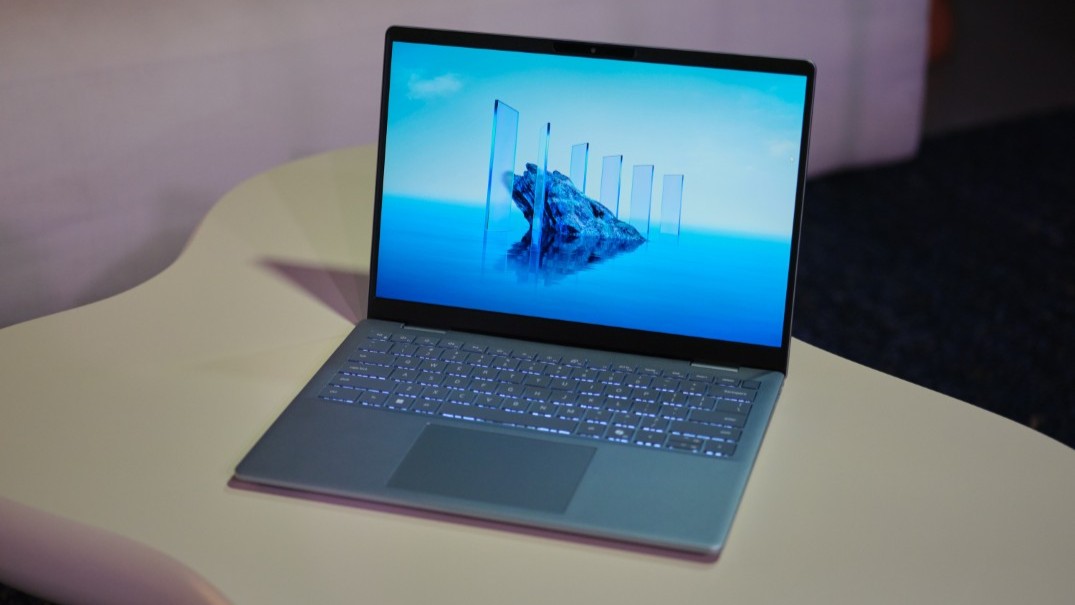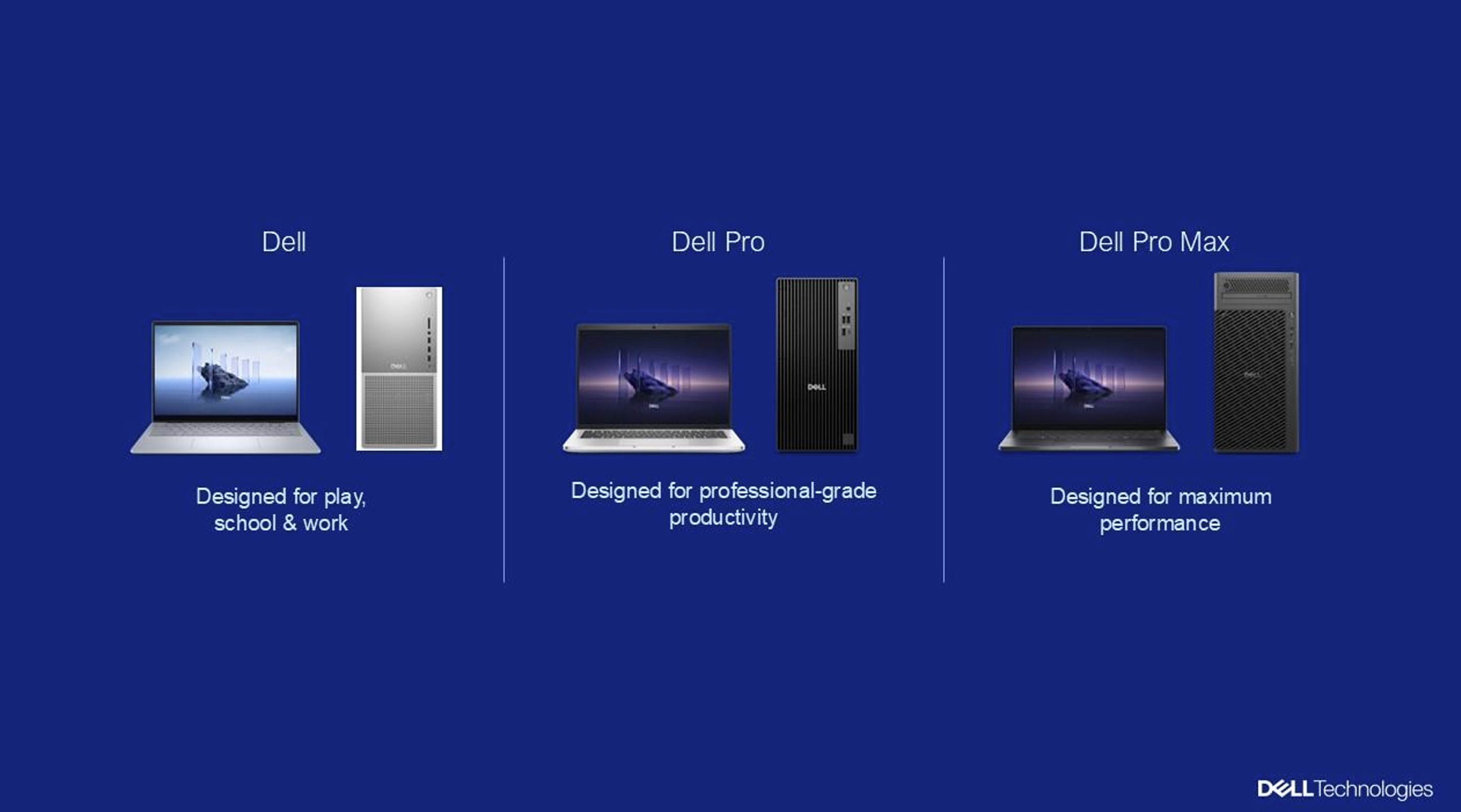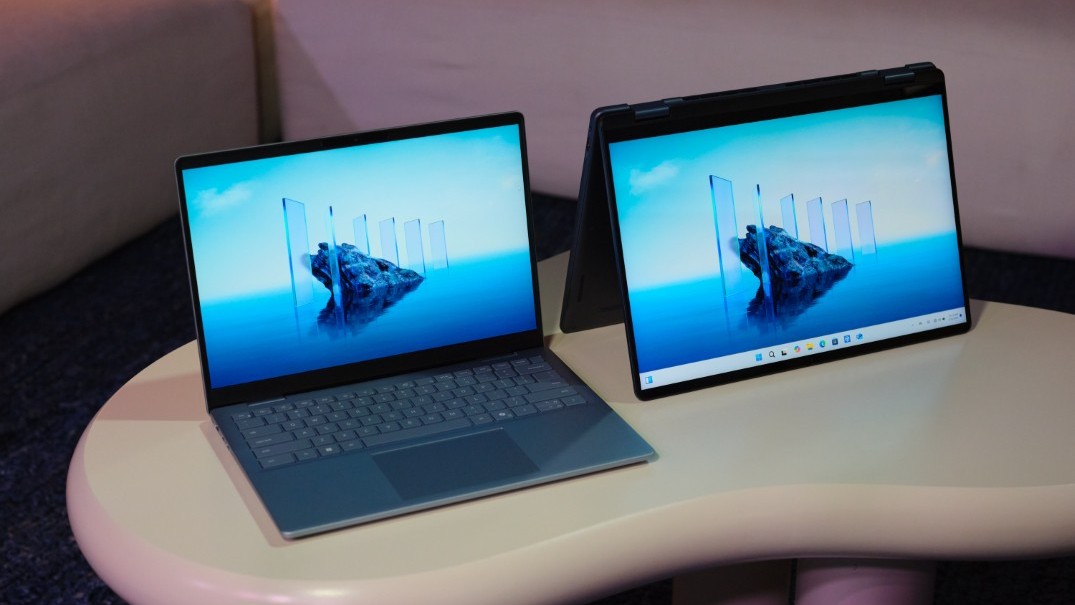Dell's confusing rebrand is highlighted by these otherwise lovely looking laptops
The Dell 14 Plus, Dell 14 Plus 2-in-1, Dell 16 Plus, and Dell 16 Plus 2-in-1 are just the tip of the iceberg for laptop names.

Dell just announced a slew of PCs at CES 2025, all with names that will be new to consumers. The Dell 14 Plus, Dell 14 Plus 2-in-1, Dell 16 Plus, and Dell 16 Plus 2-in-1 are part of the company's launch of its rebranded PCs. I'll dive into the rebrand first and then take a look at these new laptops. Dell also announced the Dell Plus 32 4K OLED QD-OLED monitor (S3225QC) that shares the "Dell Plus" branding today.
With so many names and adjectives floating around, Dell made it a bit easier to digest this wave of PCs since they have a lot in common. The Dell 14 Plus, Dell 14 Plus 2-in-1, Dell 16 Plus, and Dell 16 Plus 2-in-1 are all Copilot+ PCs. They will all be available with Intel Core Ultra Series 2 processors at launch. Dell's new laptops promise up to 39% longer battery life and up to 14% thinner profiles. As Copilot+ PCs, they support on-device AI to improve efficiency as well. AI is a big part of Dell's new PC lineup and a driving force behind the rebranding.
Dell will expand its portfolio later this year with AMD and Snapdragon X processors. Regardless of the processor that powers your Dell Plus laptop, the device will be a Copilot+ PC since it has a dedicated NPU, over 40 TOPS, and meets the other specs to earn the designation.
The Dell Plus 14 (from $1,099), Dell Plus 2-in-1 (from $999), Dell Plus 16 (from $1,149), and Dell Plus 16 2-in-1 (from $999) will start shipping on February 18, 2025. The Dell Plus 32 4K QD-OLED Monitor will become available on March 27, 2025 for $799.
What are Dell Base, Dell Plus, and Dell Premium?

I imagine the first question people will ask about the Dell Plus PCs and all the new Dell hardware today is, "what's up with these names?" Dell completely rebranded its consumer laptops and CES 2025 kicked off the new naming structure (Alienware is unaffected by the name changes).
Dell's rebranding comes as a bit of a surprise, though it's not unprecedented. HP rebranded its entire PC portfolio recently. Both Dell and HP's new naming structure is driven by the era of AI PCs.
So, how does this rebranding work? It's rather straightforward if you know all the rules and what the names mean, but I suspect it will take a while for people to adjust to.
Get the Windows Central Newsletter
All the latest news, reviews, and guides for Windows and Xbox diehards.
"Dell" devices are for play, school, and work. They're consumer PCs. Any device with the "Dell Pro" name is designed for professional-grade productivity, meaning they're commercial devices. "Dell Max" systems are consumer/commercial devices designed with maximum performance in mind.
Within each category are three tiers: Premium, Plus, and Base. "Premium" devices are the most expensive and a tier "represents the pinnacle of mobility and design." Any device with in a "Plus" tier is designed for "highly scalable performance." Base devices are entry-level and the most affordable within any given category.
Since one of the categories is just "Dell," you'll end up with devices that go straight from Dell to other information. For example, the Dell 14 Plus, Dell 14 Plus 2-in-1, Dell 16 Plus, and Dell 16 Plus 2-in-1 are all from the Dell category. For those devices and others from that category Dell is both the company name and the category.
Pieces of hardware under the new naming structure will have other designations such as screen size or the resolution of a monitor. On one hand, the name "Dell Plus 32 4K OLED QD-OLED monitor" is a mouthful. On the other hand, it isn't any more complex than the previous naming structure, which resulted in names such as "Dell UltraSharp 32 4K USB-C Hub Monitor."
Getting rid of iconic brands like XPS is a bold move by Dell, and we'll have to wait to see if it pays off. Tech enthusiasts likely know what Dell's various brands mean, but if you ask general users, there's a good chance they couldn't break down the differences between “XPS,” “Latitude,” or “OptiPlex." The fact that brands often overlap when it comes to features and pricing muddies the waters as well.
Dell's new naming structure is straightforward, even if you could end up with long names such as a hypothetical Dell Pro Max 14 Premium 2-in-1.
Dell 14 Plus and Dell 16 Plus specs and details

With Dell's new naming structure, you can tell a lot about a device just by its name. These laptops full under the new "Dell" tier of devices, which are designed for play, school, and work. They are consumer PCs. The "Plus" in the name of each laptop designates a price tier. Plus sits in the middle between "Premium" and "Base." Each category has the same three price tiers.
As the names suggest, the Dell 14 Plus and Dell 14 Plus 2-in-1 are laptops with 14-inch displays. Both run on Intel Core Ultra Series 2 processors, which means they have up to 48 TOPS for AI features. The Dell 16 Plus and Dell 16 Plus 2-in-1 have larger 16-inch displays and also run on Intel Core Ultra Series 2 processors.
Apart from screen size, many of the specs extend across both the Dell 14 Plus and Dell 16 Plus lineups. Perhaps the most notable difference is that the larger Dell 16 Plus 2-in-1 has an option for a QHD+ mini-LED touch display that can reach 600 nits of brightness. The Dell 14 Plus, in contrast, maxes out at a 2.5K non-touch screen. At the time of publication Dell has not shared full specs for all four of the new Dell Plus laptops, so we'll have to see how they stack up to each other when comparing like to like.
| Device | CPU | Graphics | Display | Memory | Storage | Ports | NPU |
|---|---|---|---|---|---|---|---|
| Dell 14 Plus | Up to Intel Core Ultra 9 | Intel Arc (up to 140V) | Up to 14-inch 16:10 2.5K (non-touch), 300 nits | Up to 32GB LPDDR5x | Up to 2TB M.2 PCie NVMe | HDMI 2.1, Thunderbolt 4.0, USB 3.2 Gen 1 Type-A, USB 3.2 Gen 2 Type-C, Audio jack | Yes (up to 48 TOPS) |
| Dell 16 Plus 2-in-1 | Up to Intel Core Ultra 9 | Intel Arc (up to 140V) | Up to 16-inch QHD+ mini-LED touch, 600 nits, DCI-P3 100%, 90Hz, HDR600 | Up to 32GB LPDDR5x | Up to 2TB M.2 PCie NVMe | HDMI 2.1, Thunderbolt 4.0, USB 3.2 Gen 1 Type-A, USB 3.2 Gen 2 Type-C, Audio jack | Yes (up to 48 TOPS) |
Dell Plus 32 4K QD-OLED Monitor

Like its "Dell" tier siblings, the Dell 32 Plus 4K QD-OLED monitor is a consumer device. It features a 31.5-inch QD-OLED display and AI-enhanced 3D spatial audio (represented by the orange circles in the image above). The monitor uses AI to ensure that the sound from its five 5w speakers drives toward your ears.
The panel of the monitor supports Dolby Vision and HDR TB400 and covers 99% DCI-P3. The monitor also supports AMD FreeSync Premium, has up to a 120Hz refresh rate, and has a response time over 0.03ms.
You can connect your device to the Dell 32 Plus 4K QD-OLED monitor through a USB-C cable that supports 90W of power, which helps reduce how many wires are on your desk.

Sean Endicott is a tech journalist at Windows Central, specializing in Windows, Microsoft software, AI, and PCs. He's covered major launches, from Windows 10 and 11 to the rise of AI tools like ChatGPT. Sean's journey began with the Lumia 740, leading to strong ties with app developers. Outside writing, he coaches American football, utilizing Microsoft services to manage his team. He studied broadcast journalism at Nottingham Trent University and is active on X @SeanEndicott_ and Threads @sean_endicott_.
